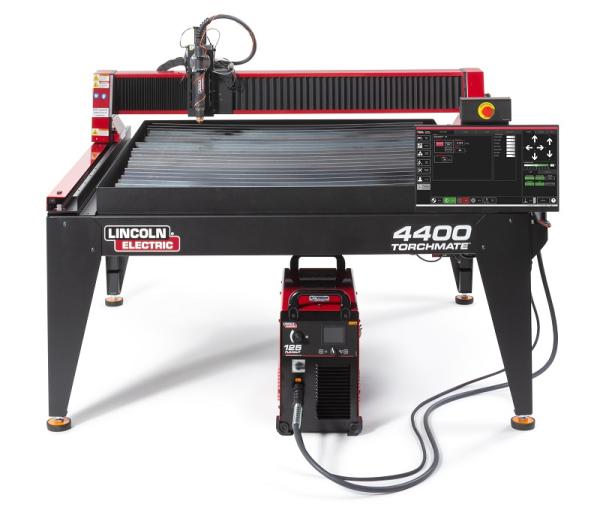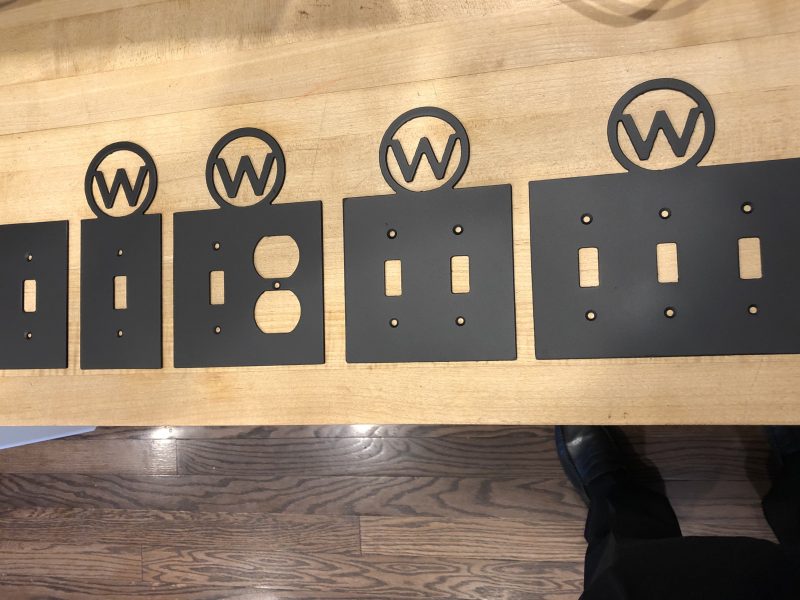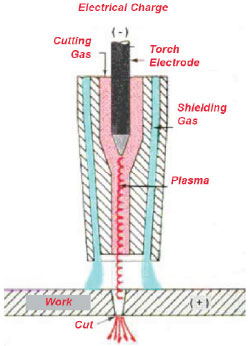Table of Contents
- Frequently Asked Questions
- 1. What factors should I consider when determining the price for CNC plasma cutting services?
- 2. Should I charge a flat rate or an hourly rate for CNC plasma cutting services?
- 3. How much should I charge for materials when providing CNC plasma cutting services?
- 4. Should I offer discounts for bulk orders or repeat customers?
- 5. How do I communicate my pricing to potential clients?
Are you a CNC plasma cutter looking to earn what you’re worth? Setting a price for your work can be a challenging task. But don’t worry, we’ve got you covered. In this article, we’ll guide you through the process of determining the right price for your CNC plasma cutting services. Whether you’re just starting out or have been in the business for years, our tips and tricks will help you maximize your earnings while keeping your clients happy. So let’s dive in and learn how to charge for CNC plasma cutting!
The cost of CNC plasma cutting varies depending on factors such as material type, thickness, complexity of design, and machine setup time. Typically, prices range from $75 to $150 per hour for a professional CNC plasma cutting service. However, some providers may charge per project or per piece based on the design complexity and material cost. It’s best to get a quote from your CNC plasma cutting service provider to determine the exact cost for your project.
H2: How Much to Charge for CNC Plasma Cutting?
Are you looking to start a CNC plasma cutting business or already have one but struggling with pricing your services? Pricing your CNC plasma cutting services can be a daunting task, but it is crucial to ensure that you are making a profit while staying competitive in the market. In this article, we will discuss the factors that affect the cost of CNC plasma cutting and how to determine the right pricing strategy for your business.
H3: Material Costs
The cost of materials is one of the most significant factors that affect the pricing of your CNC plasma cutting services. The type of material you are cutting, its thickness, and the size of the sheet all impact the price. Some materials are more expensive than others, and thicker sheets require more time and energy to cut, which can increase your costs.
To determine the cost of materials, you will need to consider the price per sheet or per pound, the scrap rate, and the yield. Scrap rates refer to the amount of material that is wasted during the cutting process, while the yield is the amount of usable material that you can get from a sheet. It is essential to factor in the scrap rate and yield to ensure that you are not underestimating your costs.
H3: Labor Costs
The cost of labor is another significant factor that affects the pricing of your CNC plasma cutting services. The amount of time it takes to set up the machine, load the material, and program the design all impact the labor costs. Additionally, the complexity of the design and the number of cuts required can also impact the time it takes to complete the job.
To determine the labor costs, you will need to consider the hourly rate of your employees and the amount of time it takes to complete the job. You may also want to consider the skill level of your employees and the level of expertise required for the job.
H3: Overhead Costs
Overhead costs refer to the expenses that are not directly related to the production of your CNC plasma cutting services. These costs include rent, utilities, insurance, and other administrative expenses. It is important to factor in these costs to ensure that you are making a profit and covering all of your expenses.
To determine your overhead costs, you will need to add up all of your expenses and divide them by the number of jobs you complete in a given period. You can then add the overhead cost per job to the material and labor costs to determine the total cost of the job.
H3: Profit Margin
Once you have determined your material, labor, and overhead costs, you will need to factor in your profit margin. Your profit margin is the amount of money you make on top of your costs. It is essential to set a reasonable profit margin to ensure that you are making a profit while staying competitive in the market.
To determine your profit margin, you will need to consider your competition, the demand for your services, and the value you provide to your customers. You may also want to consider offering discounts for bulk orders or repeat customers to incentivize them to work with you.
H3: Pricing Strategies
Now that you have determined your costs and profit margin, it is time to develop a pricing strategy for your CNC plasma cutting services. There are several pricing strategies you can use, including cost-plus pricing, value-based pricing, and market-based pricing.
Cost-plus pricing involves adding a markup to your costs to determine the final price. This pricing strategy ensures that you are covering your costs and making a profit. Value-based pricing involves setting your prices based on the value you provide to your customers. This pricing strategy is useful if you offer unique or customized services. Market-based pricing involves setting your prices based on what your competitors are charging. This pricing strategy can be useful if you are just starting and need to establish yourself in the market.
H3: Benefits of CNC Plasma Cutting Services
CNC plasma cutting services offer several benefits, including precision, efficiency, and versatility. CNC plasma cutting machines use computer-aided designs to cut materials with high precision, which ensures that the final product is accurate and consistent. Additionally, CNC plasma cutting machines are efficient and can complete jobs quickly, which can save you time and money. Finally, CNC plasma cutting machines are versatile and can cut a wide range of materials, including steel, aluminum, and copper.
H3: CNC Plasma Cutting Services vs. Traditional Cutting Methods
CNC plasma cutting services offer several advantages over traditional cutting methods. Traditional cutting methods, such as sawing and shearing, can be time-consuming and inaccurate, which can result in wasted materials and increased costs. Additionally, traditional cutting methods may not be suitable for cutting complex designs or thick materials. CNC plasma cutting machines, on the other hand, offer high precision and can cut through thick materials with ease, which can save you time and money.
H3: Conclusion
Determining the right pricing strategy for your CNC plasma cutting services can be challenging, but it is crucial to ensure that you are making a profit while staying competitive in the market. By considering the factors that affect your costs, developing a pricing strategy, and offering quality services, you can establish yourself as a reliable and profitable CNC plasma cutting business.
Frequently Asked Questions
Here are some common questions and answers about how much to charge for CNC plasma cutting:
1. What factors should I consider when determining the price for CNC plasma cutting services?
When determining the price for CNC plasma cutting services, there are several factors to consider. First, you should consider the complexity of the design and the time it will take to complete the job. You should also consider the materials that will be used and the cost of those materials. Other factors to consider include the overhead costs of running your business, such as rent, utilities, and insurance.
It’s also important to consider the market rate for CNC plasma cutting services in your area. You don’t want to price yourself out of the market, but you also don’t want to charge too little and not make a profit. Research what other businesses are charging for similar services in your area and adjust your pricing accordingly.
2. Should I charge a flat rate or an hourly rate for CNC plasma cutting services?
Whether you should charge a flat rate or an hourly rate for CNC plasma cutting services depends on the complexity of the job and the materials being used. For simple jobs that can be completed quickly, a flat rate may be more appropriate. However, for more complex jobs that require a lot of time and materials, an hourly rate may be more appropriate.
You should also consider your own experience and expertise when deciding whether to charge a flat rate or an hourly rate. If you have a lot of experience and can complete jobs quickly and efficiently, a flat rate may be more profitable for you. However, if you’re just starting out or the job requires a lot of skill and attention to detail, an hourly rate may be more appropriate.
3. How much should I charge for materials when providing CNC plasma cutting services?
When providing CNC plasma cutting services, you should charge for the cost of the materials you’re using, plus a markup for your time and expertise. The markup you charge will depend on the complexity of the job and the materials being used. For example, if you’re using expensive materials like stainless steel, you may need to charge a higher markup to cover the cost of those materials.
To determine how much to charge for materials, research the cost of the materials you’ll be using and add a markup that will cover your overhead costs and help you make a profit. It’s also a good idea to be transparent with your clients about the cost of materials and how you’re pricing your services.
4. Should I offer discounts for bulk orders or repeat customers?
Offering discounts for bulk orders or repeat customers can be a good way to build loyalty and attract more business. However, you should be strategic about the discounts you offer and make sure they don’t cut into your profits too much.
When offering discounts for bulk orders, consider the cost of materials and the time it will take to complete the job. You may be able to offer a lower price per unit for larger orders, but you should still make sure you’re making a profit.
For repeat customers, you could offer a loyalty program that rewards them for their continued business. This could be in the form of a discount on future orders or other perks like free shipping or priority service.
5. How do I communicate my pricing to potential clients?
When communicating your pricing to potential clients, it’s important to be clear and transparent about what you’re charging and why. Start by creating a pricing sheet that outlines your rates for different types of jobs and materials.
When speaking to potential clients, explain how you arrived at your pricing and be prepared to answer any questions they may have. It’s also a good idea to provide estimates for specific jobs so clients have a better idea of what to expect.
Finally, make sure you’re open to negotiation and willing to work with clients to find a pricing structure that works for both parties. Building relationships with clients is key to building a successful business, so be flexible and willing to make adjustments as needed.
In conclusion, determining the cost for CNC plasma cutting can be a daunting task. However, taking into account various factors such as material cost, machine operation cost, and labor cost will help you arrive at a fair and competitive price for your services.
It is important to remember that charging too little may lead to financial loss and undervaluing your skills, while charging too much may drive away potential customers. Striking a balance between affordability and profitability is key.
Ultimately, the success of your CNC plasma cutting business will depend on your ability to provide high-quality work at a fair price, while building lasting relationships with your customers. With careful consideration and market research, you can establish a pricing strategy that works for your business and meets the needs of your customers.
Request a quote today!
[contact-form-7 id="1578" title="Contact form"]
Please compress the file into a ZIP or RAR file before uploading. Alternatively, send through your RFQ by email.
enquires@unitymanufacture.com





